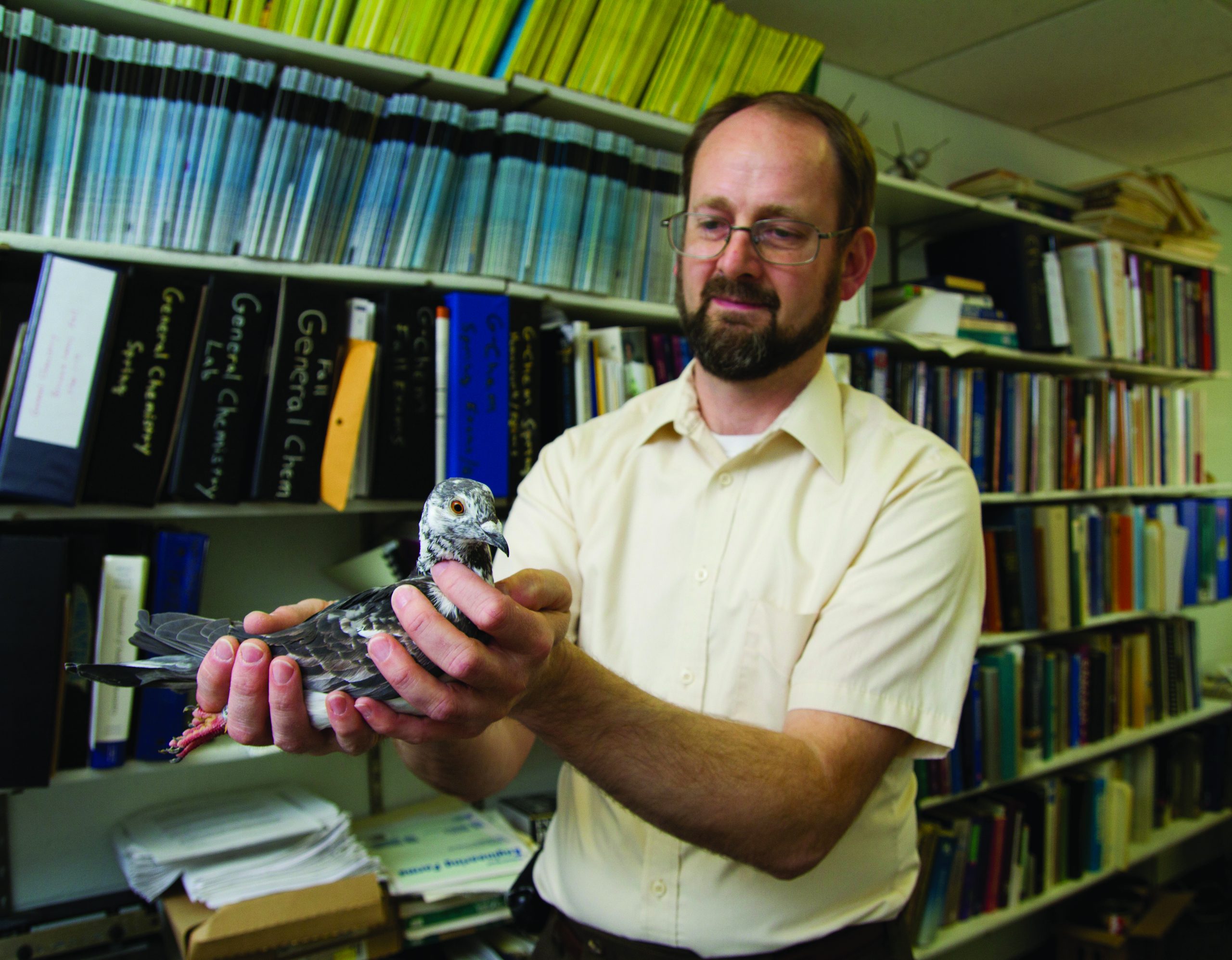Dan Smith is an athletic trainer of sorts. Instead of working with injured college players, though, he prepares pigeons to fly home from hundreds of miles away with remarkable speed and accuracy.
Smith, associate professor of chemistry, currently raises 200 homing pigeons in a white barn located behind his house five miles north of campus.For the past 14 years, Smith has spent much of his free time breeding and readying pigeons to fly to his house from up to 400 or 500 miles away.
“Think of them as athletes,” said Smith of his pigeons. “These birds can do marathons, but you need to keep them healthy or they don’t stand a chance of getting home.” Just as an athlete cannot run a marathon without training first, Smith’s pigeons must build up wing muscle and stamina before they are ready to fly long distances.
To begin the homing process, Smith weans young birds and lets them fly together in small circles above his barn. Once they’ve traveled small distances, they slowly gain enough confidence to fly beyond sight of Smith’s property. By the age of three months, most of the pigeons are ready to fly distances greater than 50 miles, traveling in groups at approximately 55 miles per hour.
Smith feeds his birds as an incentive to return to the barn, much in the same way that college students can be attracted to events by food, he said.
“Lots of birds can home,” explained Smith, who listed geese and robins as examples. “The impressive thing about pigeons is that we can get them to do it when we want them to.”
In the early years of his homing hobby Smith entered his birds in local racing competitions, but he was eventually turned off by the high amount of gambling in the racing community.
Smith’s racing competitors did, however, spark his interest in selective breeding, a feat he began to pursue 10 years ago. Since then his genetics research has primarily focused on variations in feather coloring.
Some of his research findings have included the discovery of the gene for blindness in pigeons as well as a gene for black and red coloring. Currently, Smith is working with research student Jing Jin, a senior environmental science and biochemistry major, to isolate mRNA for various color patterns in pigeons.
“Pigeons are the rat of the avian group,” explained Smith, referring to the great trait variation found in both lab rats and pigeons. His present pigeon collection includes a mix of every feather color imaginable: blue, gray, black, red, speckled, bronze, tan, brown and white. His favorite pigeons at the moment are the ones with iridescent bronzing on the wings.
Jin, meanwhile, feels lucky to be part of Smith’s unique research project. “Everyone [in biology] works on mice and fruit flies, but this is a little unusual,” she said. Then, with a laugh, Jin recalled a recent incident in which a pigeon escaped from its cage and went flying down the third floor hallway of the Science Building.
Smith and his students enjoy working with the rare color birds at school, but Smith does not use the rare color birds for homing, as they often lack strong homing instincts.
Homing, it turns out, is an inherited trait that is possibly related to a bird’s ability to sense magnetic fields. But even birds that have strong homing instincts can still veer off course if they get scared by hawks or find new homes.
One of the most rewarding parts of working with pigeons, said Smith, is the joy he feels when he sees his four children get excited about the process. Each year, for example, the family watches new pigeon eggs incubate in the barn—pigeon eggs have thin shells, so it is possible to see the birds growing before they hatch.
Equally appealing to Smith is the satisfaction of releasing something into the wild and having it return to him.
“I love the idea of a bird coming back to you from so many miles away,” said Smith. “How neat is that?”



